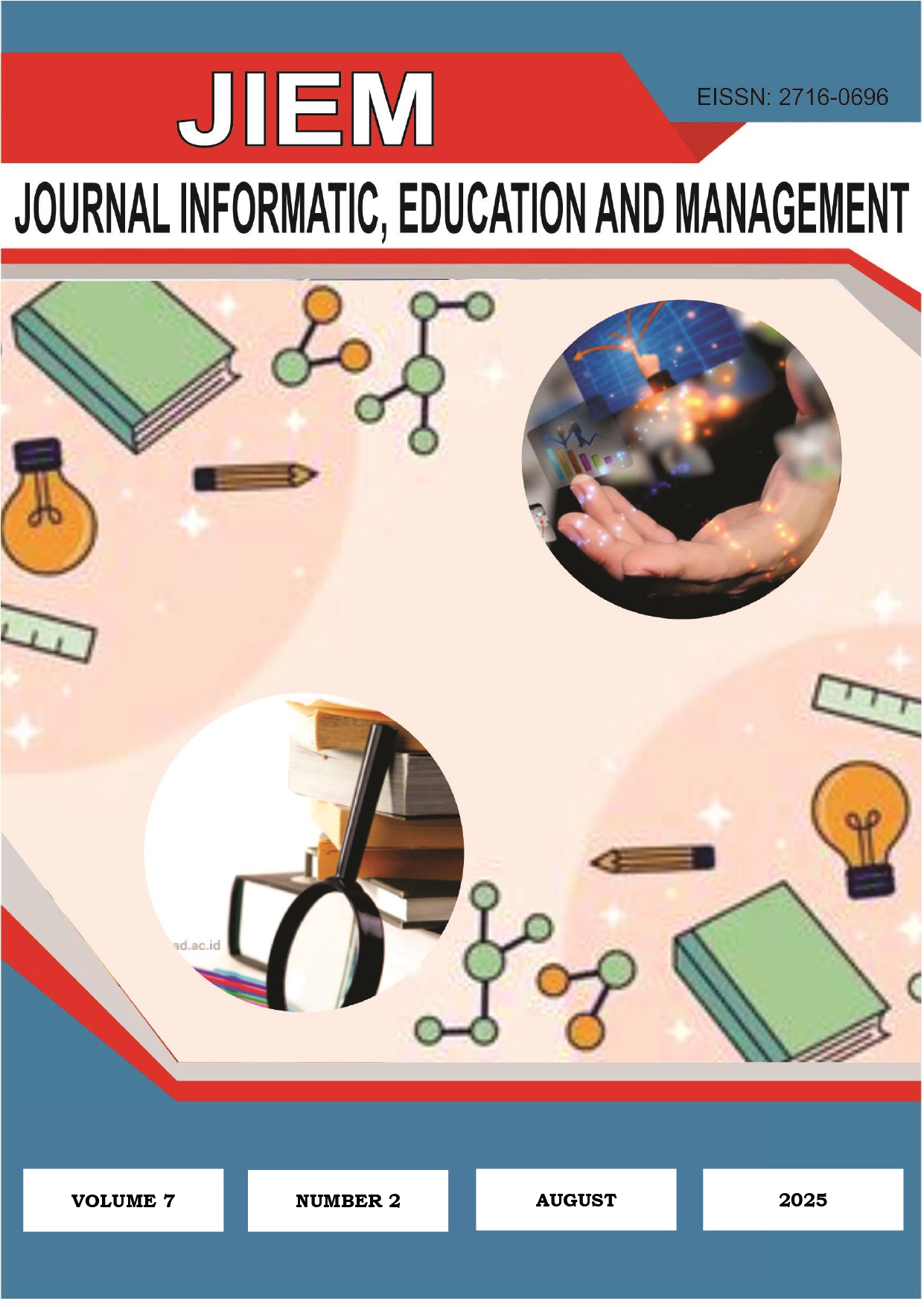Analysis of Elementary School Students’ Scientific Literacy Skills on the Topic of Animal Life Cycles
Abstract
The mastery of scientific literacy is a critical competency in 21st-century education, enabling students to apply scientific knowledge in solving real-world problems. However, evidence shows that elementary school students in Indonesia generally achieve low levels of scientific literacy, particularly in conceptual reasoning and the application of scientific evidence. This study aimed to analyze the scientific literacy skills of Grade IV students at UPTD SD Negeri 2 Peusangan Siblah Krueng, focusing on three key indicators: identifying scientific evidence, explaining scientific phenomena, and applying scientific evidence in daily life. Employing a descriptive qualitative approach with an intrinsic case study design, data were collected from 25 students through a 15-item test developed based on the Programme for International Student Assessment framework. The responses were analyzed using content analysis to categorize ability levels. The results indicated that 44% of students were in the low category, 40% in the high category, and 16% in the moderate category. Students performed best in identifying scientific evidence, followed by applying evidence in real-life contexts, while the lowest achievement was in explaining phenomena, reflecting limited conceptual understanding and reasoning ability. These findings highlight the need for transforming science instruction from content delivery to experiential, inquiry-based, and problem-based learning integrated with real-life contexts and technology. Such pedagogical reforms are expected to foster deeper conceptual mastery, critical thinking, and practical application of scientific knowledge, thereby contributing to both the theoretical development of science education and practical efforts to enhance 21st-century competencies at the primary school level.
References
Ardani, K. D. ., I Gede Margunayasa, & Kadek Ari Dwiarwati. (2024). Komik Bernuansa Kearifan Lokal “Upacara Ayunan Jantra” Berbantuan Augmented Reality untuk Meningkatkan Literasi Sains Siswa. International Journal of Elementary Education, 8(4), 743–751. https://doi.org/10.23887/ijee.v8i4.92699
Astria, F. P., Wardani, K. S. K., Nurwahidah, N., & Hasnawati, H. (2022). Analisis Kemampuan Literasi Sains (KLS) Siswa Sekolah Dasar pada Pembelajaran Sains. Jurnal Ilmiah Profesi Pendidikan, 7(4b), 2744–2752. https://doi.org/10.29303/jipp.v7i4b.1064
Creswell, J. W., & Poth, C. N. (2018). Qualitative inquiry and research design: Choosing among five approaches (4th ed.). SAGE Publications.
Dwisetiarezi, D., & Fitria, Y. (2021). Analisis kemampuan literasi sains siswa pada pembelajaran IPA terintegrasi di sekolah dasar. Jurnal Basicedu, 5(4), 1958–1967. https://doi.org/10.31004/basicedu.v5i4.1154
Harahap, S., Nasution, S. A., & Rambe, R. A. (2022). Analisis literasi sains siswa sekolah dasar pada pembelajaran IPA berbasis inkuiri terbimbing. Jurnal Basicedu, 6(1), 334–345. https://doi.org/10.31004/basicedu.v6i1.2013
Organisation for Economic Co-operation and Development. (2018). PISA 2018 assessment and analytical framework. OECD Publishing. https://doi.org/10.1787/b25efab8-en
Organisation for Economic Co-operation and Development. (2019). PISA 2018 results (Volume I): What students know and can do. OECD Publishing. https://doi.org/10.1787/5f07c754-en
Rachman, A., Dewi, S., & Hidayat, R. (2022). Integrasi kreativitas dan proyek sederhana dalam pembelajaran daur hidup untuk meningkatkan pemahaman sains siswa sekolah dasar. Jurnal Pendidikan IPA Indonesia, 11(3), 456–468. https://doi.org/10.xxxx/jpii.v11i3.xxxx
Rahmawati, D., & Setiawan, R. (2023). Pengaruh literasi sains terhadap keterampilan problem-solving siswa sekolah dasar. Jurnal Pendidikan IPA Terapan, 11(3), 112-127.
Sariyyah, N., Korain, E. F., Faradila, K., Bela, A. S., Mere, R. L., Bunga, M. A., & Nitti, V. A. F. (2025). Meningkatkan literasi sains siswa sekolah dasar swasta Muhammadiyah melalui pendekatan pembelajaran interaktif berbasis video edukatif dan konteks kehidupan nyata. Pedamas (Pengabdian Kepada Masyarakat), 3(04), 1593–1601. https://pekatpkm.my.id/index.php/JP/article/view/810
Winata, F., & Suranto, S. (2018). Kategori kemampuan literasi sains siswa sekolah dasar. Jurnal Ilmu Pendidikan, 24(2), 112–121. https://doi.org/10.xxxx/jip.v24i2.xxxx
Yin, R. K. (2018). Case study research and applications: Design and methods (6th ed.). SAGE Publications.


.jpg)












